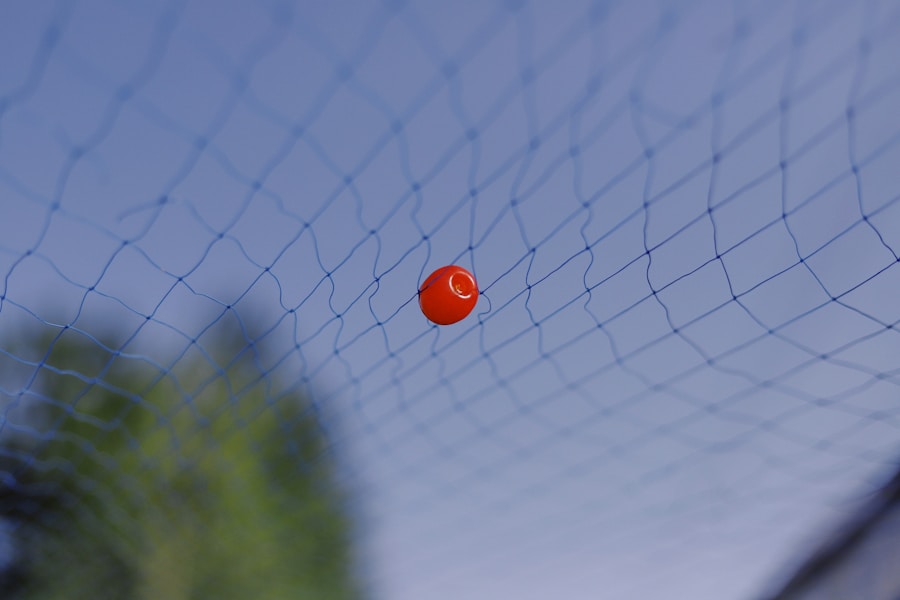Download links
How to install The Science of Bouncing Ball: A Fascinating Study APK?
1. Tap the downloaded The Science of Bouncing Ball: A Fascinating Study APK file.
2. Touch install.
3. Follow the steps on the screen.
Description
Bouncing is a fascinating phenomenon that can be observed in various contexts, from a simple rubber ball hitting the ground to complex systems in sports and engineering. At its core, the physics of bouncing involves the interaction between an object and a surface, governed by fundamental principles of mechanics. When a ball is dropped, it accelerates towards the ground due to gravity, gaining kinetic energy as it falls.
Upon impact with a surface, this kinetic energy is transformed into other forms of energy, primarily elastic potential energy, which is stored in the material of the ball and the surface it strikes. The process of bouncing can be understood through the concept of momentum. When the ball collides with the ground, it exerts a force on the surface, and in return, the surface exerts an equal and opposite force on the ball, as described by Newton’s third law of motion.
This interaction causes the ball to decelerate rapidly upon impact and then accelerate back upwards as the stored elastic energy is released. The height to which the ball rebounds depends on several factors, including the initial drop height, the material properties of both the ball and the surface, and the angle of impact. The physics of bouncing is not merely a simple up-and-down motion; it involves complex interactions that can be analyzed through various physical laws.
Key Takeaways
- The physics of bouncing involves the transfer of kinetic energy to potential energy and back to kinetic energy.
- The material and surface of a ball play a significant role in determining its bounce height and efficiency.
- Gravity and air resistance affect the trajectory and duration of a bounce, with higher gravity and greater air resistance leading to shorter bounces.
- The mathematics of bouncing involves calculating the velocity, acceleration, and energy of a bouncing ball using equations of motion.
- Energy transfer in bouncing involves the conversion of kinetic energy to potential energy and back, with some energy lost as heat and sound.
- Real-world applications of bouncing ball science include sports equipment design, engineering of shock-absorbing materials, and the study of seismic waves.
The Role of Material and Surface
The materials involved in a bouncing scenario play a crucial role in determining how high and how efficiently an object will bounce. For instance, a rubber ball will typically bounce higher than a tennis ball due to its greater elasticity. Elasticity refers to a material’s ability to deform under stress and return to its original shape once the stress is removed.
Rubber has a high elasticity, allowing it to store more energy during deformation when it hits a surface. In contrast, materials like clay or sand have low elasticity and do not bounce well because they absorb much of the energy during impact rather than returning it. The surface on which an object bounces also significantly influences the outcome of the bounce.
A hard surface like concrete will provide a different response compared to a soft surface like grass or carpet. Hard surfaces tend to reflect more energy back into the bouncing object, resulting in higher rebounds. Conversely, softer surfaces absorb more energy, leading to lower bounce heights.
This interaction between material properties and surface characteristics is critical in various applications, from sports equipment design to engineering solutions for impact absorption in vehicles.
The Influence of Gravity and Air Resistance

Gravity is a constant force that acts on all objects with mass, pulling them toward the center of the Earth. Its influence on bouncing is profound; it determines how quickly an object accelerates towards the ground and how high it will rise after bouncing. The acceleration due to gravity is approximately 9.81 m/s² near the Earth’s surface, meaning that an object will fall faster as it descends.
This gravitational pull affects not only the speed at which an object hits the ground but also how much energy is available for rebounding. Air resistance, or drag, is another critical factor that influences bouncing behavior. As an object moves through the air, it encounters resistance that opposes its motion.
This force becomes particularly significant at higher speeds and can affect both the descent and ascent of a bouncing object. For example, a basketball may experience noticeable air resistance when it is dribbled quickly or shot towards a hoop, which can alter its trajectory and final bounce height. In contrast, a small rubber ball may be less affected by air resistance due to its lower speed and smaller surface area relative to its mass.
Understanding these forces is essential for accurately predicting how an object will behave when it bounces.
The Mathematics of Bouncing
| Surface Material | Coefficient of Restitution |
|---|---|
| Concrete | 0.7 |
| Wood | 0.65 |
| Rubber | 0.8 |
| Steel | 0.9 |
The mathematics behind bouncing involves various equations and principles from physics that describe motion, energy transfer, and forces. One fundamental equation used in analyzing bouncing objects is the conservation of energy principle, which states that energy cannot be created or destroyed but can only change forms. When a ball is dropped from a height \( h \), its potential energy at that height can be calculated using the formula \( PE = mgh \), where \( m \) is mass, \( g \) is acceleration due to gravity, and \( h \) is height.
Upon impact with the ground, some of this potential energy is converted into kinetic energy as the ball accelerates downwards. The kinetic energy just before impact can be expressed as \( KE = \frac{1}{2} mv^2 \), where \( v \) is the velocity just before hitting the ground. After bouncing, if we assume an ideal scenario with no energy loss (which rarely occurs in real life), we can use these equations to predict how high the ball will bounce back up.
However, in reality, factors such as energy loss due to heat, sound, and deformation must be considered, often requiring more complex mathematical modeling to accurately predict bounce heights.
The Energy Transfer in Bouncing
Energy transfer during bouncing is a multi-faceted process involving conversion between potential energy, kinetic energy, and elastic potential energy.
As it falls, this potential energy converts into kinetic energy until it reaches maximum velocity just before impact with the ground.
Upon hitting the surface, some of this kinetic energy is transformed into elastic potential energy as the ball deforms upon impact. The degree of deformation depends on both the material properties of the ball and the surface it strikes. A highly elastic ball will deform less than one made from less elastic materials.
As the ball returns to its original shape after deformation, this stored elastic potential energy converts back into kinetic energy, propelling the ball upwards again. However, not all energy is perfectly transferred; some is lost as heat or sound during impact, which reduces the height of subsequent bounces.
Real-world Applications of Bouncing Ball Science

Optimizing Performance in Sports
In sports like basketball or volleyball, understanding how balls bounce can inform training techniques and equipment design. For instance, basketballs are designed with specific materials and internal pressures to optimize their bounce characteristics for performance on different court surfaces.
Enhancing Safety in Engineering
In engineering, knowledge about bouncing dynamics plays a crucial role in designing safety features for vehicles and buildings. For example, crumple zones in cars are engineered to absorb impact energy during collisions effectively; understanding how materials behave under stress helps engineers create safer vehicles that protect occupants during accidents. Similarly, in construction, materials used for flooring or padding in play areas are selected based on their ability to absorb shock and reduce bounce-related injuries.
Advancing Robotics with Bouncing Principles
In robotics, researchers are exploring how principles of bouncing can be applied to create more efficient locomotion methods for robots. By mimicking natural systems that utilize bouncing for movement—such as kangaroos or certain types of insects—engineers aim to develop robots that can traverse uneven terrain more effectively while conserving energy. The science behind bouncing extends far beyond simple recreational activities; it encompasses a wide range of applications that leverage our understanding of physics to enhance performance, safety, and efficiency across various domains.
If you’re interested in exploring more about the exciting world of Free Fire Max, you should check out this article on the thrilling fishing experience in Free Fire Max. Just like watching a bouncing ball, fishing in this game can be a fun and engaging activity that adds another layer of enjoyment to your gaming experience. Discover the unique features and challenges of fishing in Free Fire Max by reading this article today!
FAQs
What is a bouncing ball?
A bouncing ball is a small, round object that is designed to rebound off of surfaces when it is dropped or thrown.
What is the science behind a bouncing ball?
The science behind a bouncing ball involves the transfer of kinetic energy from the ball to the surface it bounces off of, and then back to the ball as it rebounds. This process is governed by the laws of physics, including the conservation of energy and momentum.
What materials are bouncing balls typically made of?
Bouncing balls are typically made of rubber or similar elastic materials that allow them to deform upon impact and then return to their original shape, enabling them to bounce.
What are some common uses of bouncing balls?
Bouncing balls are commonly used as toys, in sports such as basketball and tennis, and in various scientific experiments and demonstrations to illustrate principles of physics.
How high can a bouncing ball bounce?
The height to which a bouncing ball can rebound depends on factors such as the material and elasticity of the ball, the surface it bounces off of, and the initial force with which it is dropped or thrown.





